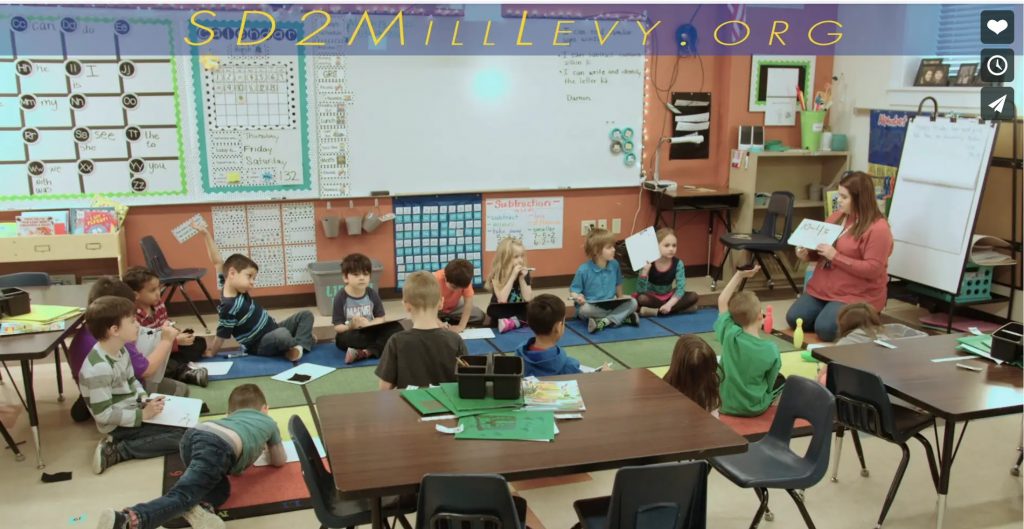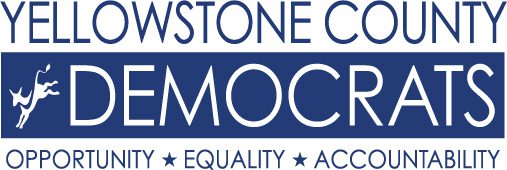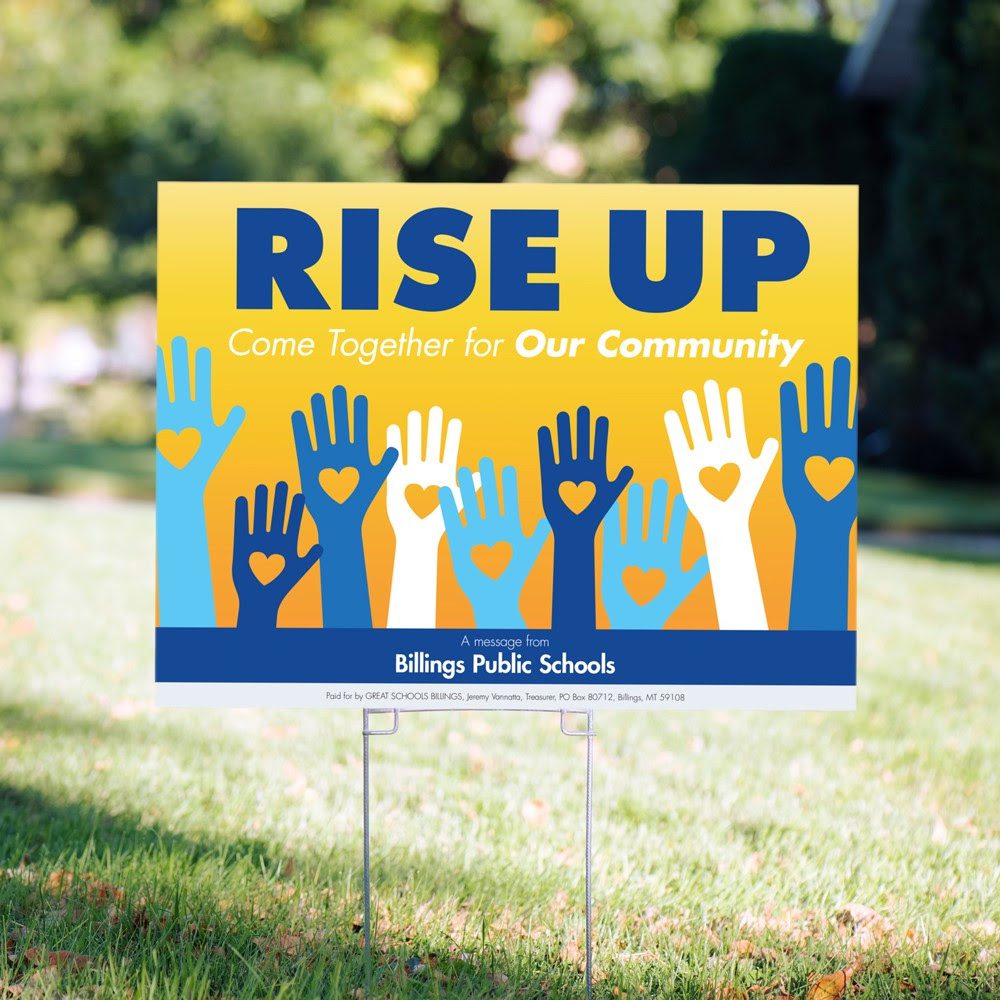- On July 7, voters will be asked to consider a 1.6 million levy to support Billings elementary schools. Ballots will be mailed out on June 16 and must be returned by 8pm on July 7.
- The elementary levy would increase taxes on a $100,000 home by $0.82 per month, and a $200,000 home by $1.63 per month.
- The district has cut spending, reduced administrative and classroom personnel, and reduced operational building budgets by 10%
- A levy is needed to prevent additional cuts in the K-8 system
- The levy is part of a comprehensive reform strategy that includes asking the Legislature to address the lack of fairness in the state school-funding formula.
Why is there a budget shortfall?
There are two core issues that caused the budget situation we face today: a budget error locally and a fundamentally flawed state funding formula that disproportionately harms larger districts.
At the local level, when voters passed a bond to renovate elementary buildings and build two new middle schools, the School Board Trustees decided against a mill levy to fund operational costs, based on budget projections that showed the new costs could be absorbed in the budget. Those projections turned out to be wrong. When voters passed a mill levy in 2017, necessary staff were added in key areas — including reading and math intervention – but the underlying failure to address the true costs of the middle school went unresolved. The shortfalls were being patched with some one-time-only funds from prior years, but that pathway isn’t sustainable. At the start of the 2019-2020 school year, Billings Public Schools faced a $4.5 million shortfall.
When our new superintendent Greg Upham discovered a structural deficit in the elementary budget, he immediately went to work to close the gap. A hiring freeze was put into place, a 10% across the board reduction in operational costs was made, and a proposal to reduce payroll by $2.6 million was developed. Superintendent Upham has also chosen to freeze his own salary and continues to push his team to identify efficiencies. Those cuts close part of the gap, but a mill levy will be needed to balance the budget and avoid future cuts.
While these local reductions are the fiscally responsible thing to do, the real issue is the inequitable funding formula developed by the Legislature that hurts Billings’ students. The current funding formula gives a lump sum amount to each district – regardless of the number of schools in that district. That means that a small district with one K-8 school receives as much funding as Billings, with 28 schools. The formula also gives districts a per-student amount, but that amount declines for each additional student, commonly referred to as the decrement.
The state shouldn’t treat some students as more valuable than others. And it shouldn’t penalize urban areas for their size. Billings’ students deserve the same high-quality educational opportunity as any other child in Montana. It is time that the state recognize that.
Get a Yard Sign
You can show your support and pick up a yard sign at Allegra Printing located at 2620 Overland Ave, Billings, MT 59102.
Ideas?
Share your ideas with our school board. Email us sd2ideas@billingsschools.org
Understanding Montana School Finance

What Can We Do?
Billings Public Schools (BPS) faces a multi-million gap in the budget that will grow over time, unless serious action is taken. The district has already frozen hiring, implemented a 10% across-the-board cut in operations, and proposed $2.6 million in cuts for the 2020-2021 school year. On July 7, voters will have a chance to vote on a mill levy to add $1.6 million in funding to close the gap. The levy and cuts are a part of a comprehensive budget reform strategy — the heart of which lies in ending the inequity in state school funding that harms Billings kids and their peers in other urban districts.
STEP 1: Reduce Spending
BPS implemented an elementary hiring freeze, reduced operational costs by 10% across the board for the 2019-2020 school year, and has identified $2.6 million in personnel cuts for the upcoming year, including reductions in administrative staff. These targeted cuts are designed to close the budget gap while ensuring student safety, preserving accreditation, and reducing programs, rather than eliminating them.
STEP 2: Improve Accountability & Transparency
Superintendent Greg Upham has changed the way BPS will budget. Rather than working off of projections that assume only best-case scenarios, School Board Trustees – and the public – will now see budgets that provide three revenue projections: best case, worst case, and best estimate. By examining multiple scenarios, our elected officials can make better decisions and plan for a rainy day. Superintendent Upham has also changed the way that labor contracts are negotiated, ending the “us vs. them” old style collective bargaining, and instead getting everyone at the table to focus on the shared goal of ensuring high quality schools.
STEP 3: Vote in Favor of the Mill Levy
Voters will be asked this July to vote on a $1.6 million levy for the elementary districts to avoid further cuts. That equates to a $0.82 monthly tax increase, or $9.80 annual increase, on a $100,000 tax-assessed home. On a $200,000 home, the impact would be $1.63 monthly, or $19.60 annually. Montana law assumes that voters will fund about 20% of their school budget through mill levy. There is a lot of economic hardship right now, and we need to make sure our schools have the resources to keep our kids safe.
STEP 4: Fix the Formula
Montana’s school funding formula is broken. It penalizes large districts and hurts our students. The current funding formula says some students are worth more than others, and that just isn’t right. The formula also grants an identical lump sum amount to every district – no matter how many schools are in the district. Basic math tells us that won’t work. Large school districts across the state are all battling this inequity, but Billings is the largest district by far, so we feel the negative impact more. Our legislators need to fix the formula.

